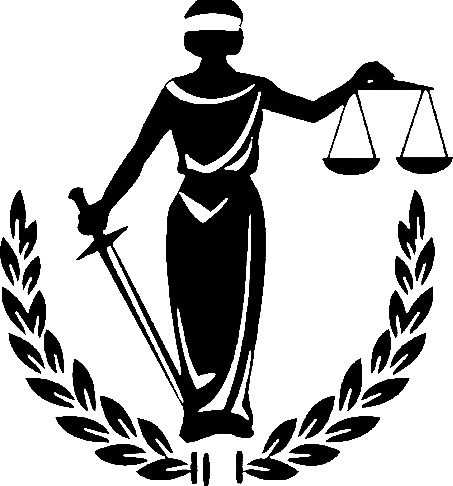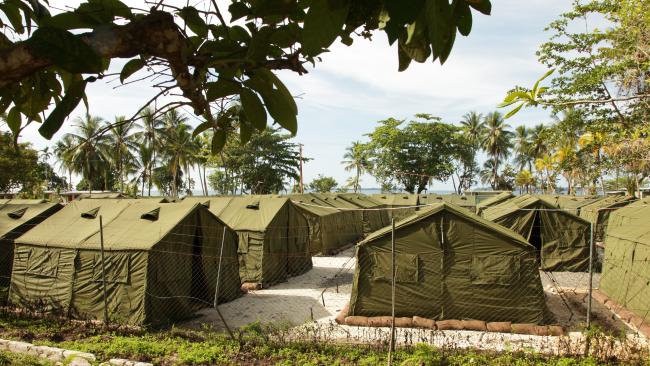- Home
- All the way with Adam
- Analysing Trump-Turnbull Phone X-change
- Are we there yet ?
- Australia's diminishing political capital
- Boat turnback bribery and predictable silence
- Causes for Refugee Movements: Political Interference
- Corrupt Syndicate and Cover-ups
- Crimes of Secretary of DIBP (2011-2014)
- Details on Fazel Chgeni case:
- Election Season and Boat Secrecies
- Elephants and Lies -- Xmas season 2017
- End Offshore Slavery
- Evacuate the Asylum-seekers from Offshore Detention Centres
- Future for PNG Asylum-seekers
- Growing List of Hero Doctors
- Honesty is the best policy on payments to smugglers
- Lady Justice shines on the Pacific
- Lectures and Pressures
- Lets shine our solidarity on Manus Island and Nauru
- Lies, Spins, Cockroach and Rodents
- Ltr to Andrew Wilkie and Adam Brandt MP
- Media monopoly and conspiracy of silence
- Media monopoly: blackout vs spotlight
- Nauruan MOU and Dabwido -- Devil not in Him
- No Lecture, More Pressure
- OSB and Public Interest Immunity
- OSB, Turnbacks and Political cover-ups
- On wherever of the Internet
- Pacific Solution for Justice
- Refugees, Trust and Faith
- Royal Commission on Offshore Processing Regime, an initiative worth supporting
- Serving the Horizontal Outreach
- Shedding some light on OSB
- Should Dutton be sacked for adopting Cockroach Agenda
- Standing up for Refugees ? Set up a FB Group and Becomes Human Rights Information Retailer:
- The 2018 Unpacking of Xmas Lies
- The Syndicate of Corruption
- The myths, secrecies and refugee policy
- The scandal at hand
- Trade Your Vote for Refugees
- Treasonous minions
- UN Refugee Convention and Huston Report 2012 , a case of public mood-swings and government policy shift
- Virtual Communities - All about Respect
- Who gonna park on that spot ?
- Witchcraft behind the Spin
- Put yourself in Indonesian's shoes
- Australian Government's bribery payments to people smugglers
- Boat bribery payments and motives behind
- Labor, Liberal and Mandatory Detention Policy
- The Irony of Australian Government's "Tough on Crimes"
- Tilting at Canberra Windmills
- Why my polly is so silent
- The ALP Position on asylum-seekers detained offshore
- The Cowards of Australia
- Refugee Policy Moonwalks and ALP
- A Lie is a 'Lie' and a Crime is a 'Crime'
- Attributions
- AFP and ICC
- (2022-Sep) OTP-ICC Preliminary finding and Request for ICC jurisdiction
- (2018-Apr) Additional Submission to ICC re: Enslavement
- (2017-Jun) Enslavement in Manus Island and Nauru
- Dob-in to International Criminal Court
- Request ICRC to Evacuate Asylum-seekers
- Rome Statute Article 25 on Individual Responsiblity
- STATE OF TORTURE LAW IN AUSTRALIA
- Urgency on Offshore Situation
- Bomana
- Asylum Processing Under PNG/Naurual Laws: Lawful or Unlawful?
- Freedom Yours, Justice Ours
- LEGAL REMEDY FOR DETAINEES IN KP, MANTRA & ITAs
- ERRONEOUS OFFSHORE LAWS
- LIBERTY - BROADENING THE SCOPE
- EXECUTIVE EMERGENCY POWER, COMMON LAW AND ALIENS
- Bomana53# and Convention Obligation
- Legal Boundary of Offshore Processing Regime
- HCA Failed Offshore Detention Challenge S195/2016
- UNORG
- (Feb 2022) Submission to Human Rights Council and Special Rapporteur on Slavery
- (Sep-2019) Letter to UN Secretary-General Guterres
- (Sep-2018) Letter to President of Nauru and Prime Minister of New Zealand
- (Aug-2019) Resettlement Appeal to European Council
- (Jul-2019) Letter to Canadian PM Justin Trudeau
- (Dec-2017) Letter to President of ICRC
- Slavery
- Deaths in Detention
- Archived: 1992-2004
Bomana53# and Convention Obligation
Friends, the legal, political and social implications for Australian government's vile practice of offshore processing have still been unfolding. In connection with Bomana prisoners, I am looking back into details of the circumstances since 2012 about how the conflict over processing of asylum applications had been arisen between the government and these asylum-seekers. As you well know, this group of asylum-seekers (Bomana53#) in PNG had insisted that their application be considered under the Australian Laws. The Australian government, on the other hand, was insisting their application must be processed under relevant PNG laws in accordance with Article 1 of UN Refugee Convention, whereas PNG is the signatory to the said Convention. We are to assume that the same asylum-processing procedures being applied to asylum-seekers on Nauru as well. Focusing on the conducts of Australian Government (i & ii), I'll try to seek answers to following questions:
(i) The Australian government had transported asylum-seekers to the safe third country, i.e. PNG & Nauru; and (ii) then subjected those asylum-seeker's refugee applications to process under the national laws of those safe third countries.
1. Are these practices (i) & (ii), in line with any known international practices ?
2. Has the government giving executive order in relation to (ii) being lawful ?
3. Would the Australian Parliament or Australia as a State have the right, the manner in which it described in (ii), to process the asylum-seekers under UN Refugee Convention?
I. TRANSFER AND PROCESSING OF ASYLUM-SEEKERS
As regards transfer of asylum-seekers over national borders, there had been a known practice within EU countries under the Dublin Convention (1999)[#1]. The Convention itself appeared undergone few revision over the years, latest one being 2013 [#2]. The EU as multilateral group had nothing to compare with Australia and regional processing countries, of course. But, in the absence of any other such international refugee agreement, we could look this Convention as a reference. We cannot usually equate, of course, between such regionally binding multilateral agreement (The EU's Dublin Convention) with the Government-to-Government MOUs being promoted by Australia, PNG and Nauru. What we are to look at and to compare is the spirits of two regional practices.
First, to the purpose of Dublin Convention: it's objective was clearly stated as "Convention determining the State responsible for examining applications for asylum lodged in one of the Member States.." This was to help the member states in taking responsibility to process an alien's asylum applications without delays.
Second, to the application determining process: Art.3 " That application shall be examined by that State in accordance with its national laws and its international obligations."
Third, on observing free consent of asylum-seeker in the determination process: Art.4 "Each Member State shall have the right to examine an application for asylum submitted to it by an alien, even if such examination is not its responsibility under the criteria defined in this Convention, provided that the applicant for asylum agrees thereto."
Fourth, there appear no free consent sought on physically moving asylum-seeker: Art.5 "Any Member State shall retain the right, pursuant to its national laws, to send an applicant for asylum to a third State, in compliance with the provisions of the Geneva Convention, as amended by the New York Protocol."
Article 11 dealt with the dispute arising under Dublin Convention and determining which member state is responsible for the processing of particular asylum application. In this case, the safeguards against any asylum applications getting stalled was included. In Art.11(4) "The Member State shall pronounce judgment on the request within three months of receipt of the claim. Failure to act within that period shall be tantamount to accepting the claim."
As we can see, the Dublin Convention has tried to adhere positively to the UN Refugee Convention, as it has stated in its preamble, "The Member States reaffirm their obligations under the Geneva Convention, as amended by the New York Protocol, with no geographic restriction of the scope of these instruments, and their commitment to co-operating with the services of the United Nations High Commissioner for Refugees in applying these instruments."
In comparison with the Government-to-Government MOUs initiated by Australian Government, only the Fourth element, i.e. physically transferring asylum-seekers to other states (i) said to have in common with the Dublin Convention.
As regards (ii) there is no precedent or similarity. An asylum-seeker may be transported to a 'safe' third country, that might be allowable. Here, again, the PNG and Nauru are considered as 'safe'. The term 'safe' cannot be read down too much in international laws. As long as those states do not compel those individuals to refoule, it may be considered as safe.
Then again, subjecting an asylum-seeker's refugee application to go under another sovereign state's national law had no international legal precedent. There is also a question as to whether this practice is within lawful limits of Executive Government (2012-2015), and even with any statutory authority (2015+, s 198AHA).
Friends, keep on this thread and I invite you, along with general public, to input on this subject, which I will put out your comment/contribution onto Bomana Page [#3] and the greater WWW.
Cheers, NetIPR.
Bomana Page
[#3] http://www.aus4iccwitness.org/node/78
Dublin Convention (1999)
[#1] https://eur-lex.europa.eu/legal-content/EN/ALL/?uri=CELEX%3A41997A0819%2...
Consolidated Dublin Convention (2013)
[#2] https://eur-lex.europa.eu/eli/reg/2013/604/oj
LATEST UPDATE
Common law aspects of the doctor-patient contractual relationship in connection with the patient's natural (inalienable) rights in medical treatment. Examine Commonwealth Government's healthcare provision in offshore immigration detention based on the common law doctor-patient contract. Open public license 4.0 applied all content.


FEATURED
Collection of evidence and cases on detention slavery. Have chosen pieces of evidence that are reliable so that one can submit directly to the tribunal of fact. All evidence is taken from verifiable sources only. Two examples of enslavement with medevac delays on Faysal Ishak Ahmed and Samuel. Open public license 4.0 applied all content.


FEATURED
Australia's offshore processing scheme is interpreted within the context of enslavement of asylum-seekers. Starts with the applicability of Australian slavery laws at offshore settings, compare international and domestic slavery laws. Then, identify offshore medevac delay incidents as the indicators for slavery. Elucidate such delay incidents as violation of natural rights of human person, and that of Torture Laws and Slavery Laws.



